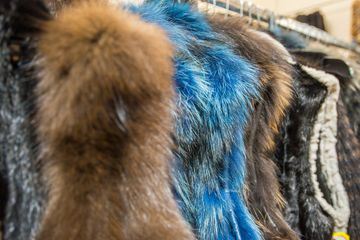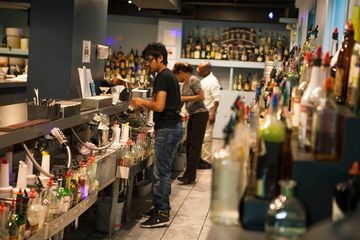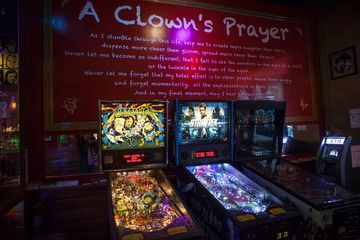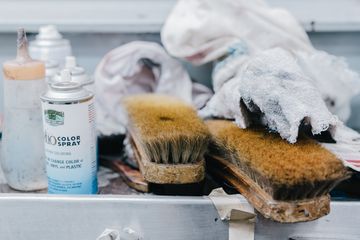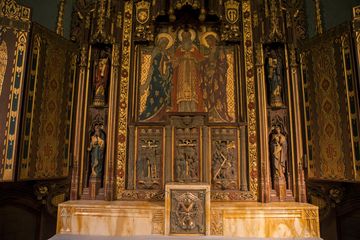I know how difficult it is for a family business to stay afloat in Midtown, and so I was deeply impressed and pleased to find Henry Cowit, Inc., a full-service furrier that has been owned by the same family for three generations. I met brothers Larry and Steve, the grandsons of the original owner, who gave me a tour of the whole space. Not only are the brothers very good at what they do, but they are also amazing New York characters who are experts on the pulse of the neighborhood. Their father moved into a building on 29th Street on 1973, where the company stayed until July of 2015, when the brothers relocated to 27th Street. From their new home, the brothers have continued serving the neighborhood by selling, finishing, lining, storing, and cleaning fur coats. Along with caring for skins and selling second-hand furs, Henry Cowit recycles fur coats, which I found fascinating. Larry and Steve showed me a set of throw pillows that they had made for a girl who wanted to keep her grandmother’s coat for sentimental reasons, but who had no cause to wear the coat herself. Larry and Steve told me that they get many similar requests, especially in the past two years. More and more young girls are getting fur items on Ebay or at flea markets, and bring them to Henry Cowit to be altered into new garments. The brothers love the new demographic and the fun recycling projects that it brings to their business. When a family works in the fur industry as long as the Cowits have, it is bound to encounter some interesting clients. When I asked Larry and Steve about their most interesting project, they said that one customer asked for the swish logo on his Nike sneakers to be covered in mink to match his blue-grey mink jacket. “We get a lot of musical artists, ” Larry and Steve explained. They also get clients from the film industry. For example, Cate Blanchett is wearing a Cowit coat in the movie Carol, which made the brothers very excited, since the costume designer is an Oscar winner. The coats are also featured in many TV shows. Their fur rentals are not only for the performing arts - the brothers also rent furs for special events, especially weddings. The furriers get their customers via word of mouth. “They know they can come to us, ” Larry proudly said. Larry also described to me a couple of the latest ideas that he is developing. One is a men’s line of normal-sized coats made of all types of fur. He explained that many masculine fur coats are enormous, to cater to the music and sports industries, but that he wants to reach a new demographic with this unique line. Larry is enthusiastic about an additional project that he is working on with an up-and-coming designer to turn old, used coats into new garments. “We take a used coat and make it look hip, ” he explained. “After all, I want to make sure my daughters still think their dad is fun! ”
